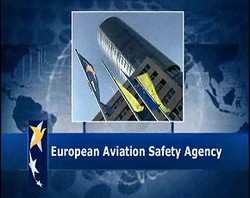Wed, Mar 06, 2013
Pushing For A Redefinition Of 'Commercial' Aviation In Europe
IAOPA has responded to European moves towards a general aviation safety strategy with a series of suggestions aimed at improving EASA regulation of GA and reducing unnecessary burdens on the industry. The Association is continuing its push for a redefinition of ‘commercial’ aviation which moves away from the all-encompassing EASA notion that virtually anything where money changes hands is commercial – including cost-sharing by private pilots, business-related flights, and group ownership of aircraft. It also believes that such pursuits as air racing and charity flights should not be considered commercial.

IAOPA also wants EASA to accelerate work on Phase 2 of the reconsideration of the Part M maintenance requirements to relieve some of the cost and bureaucracy burdens that have been improves with no improvement in safety. Some of the mistakes made with Part M are being repeated with EASA’s moves towards creating Approved Training Organisations, which face greatly increased bureaucratic requirements and costs with no apparent safety goal. IAOPA says many small flight training organisations will be unable to cope with the additional administration requirements and wants costly and burdensome changes to be revisited before they are forced on the industry. There are also concerns over instructor and examiner requirements
IAOPA is also seeking to simplify the Agency’s stance on GPS approaches at GA fields, reconsider inflexible laws on oxygen installation, and step back from its determination to kill of the UK’s Instrument Meteorological Conditions rating, allowing it at least to continue in the UK, where it has saved many lives in its 40 years of operation.

It seeks an interpretation of the ICAO language proficiency requirements to restrict them to airspace and aerodromes where an air traffic control service is required and a change to medical requirements to exclude fewer private pilots unnecessarily from the industry. Third country registration issues, it says, should be dealt with through a validation system, and STCs from ICAO-contracting states should be acceptable to all. There should be no need for EASA to approve minor modification.
In conclusion, IAOPA says the EASA requirement to achieve “a high, uniform level of safety” is too amorphous, and in suggesting that safety levels for airliners should be identical to those for paragliders or small helicopters it places too great a burden on GA. The Basic Regulation governing EASA’s work should be modified to reflect this.
IAOPA’s full submission will be made available when it is finalized.
More News
“In recent years, park officials have observed a rise in illegal drone activity, which they attribute to the increasing affordability and availability of consumer drones. In >[...]
Aero Linx: Aeronautical Repair Station Association (ARSA) ARSA is devoted to the worldwide civil aviation maintenance industry—from its global corporations to the small, inde>[...]
During Cruise Flight At 4,500 Ft, The Engine Stopped Producing Power Without Any Warning On October 4, 2025, about 2130 central daylight time, a Lancair 320 airplane, N431M, was de>[...]
With The eSPRG Only Weeks Away From Its Start Date, A-AF Will Help To Support Sport Flyers, Worldwide With the all-new and all-digital SportPlane Resource Guide getting ready for p>[...]
Also: USAF Pilots, Advanced Aircrew Academy, ATC Hiring, Hop-A-Jet Sues Pan American is attempting a comeback. Aviation merchant bank AVi8 Air Capital, alongside Pan American Globa>[...]
 Aero-News: Quote of the Day (10.27.25)
Aero-News: Quote of the Day (10.27.25) ANN's Daily Aero-Linx (10.27.25)
ANN's Daily Aero-Linx (10.27.25) NTSB Prelim: Lancair 320
NTSB Prelim: Lancair 320 Airborne Programming Continues Serving SportAv With 'Airborne-Affordable Flyers'
Airborne Programming Continues Serving SportAv With 'Airborne-Affordable Flyers' Airborne-Flight Training 10.23.25: PanAm Back?, Spirit Cuts, Affordable Expo
Airborne-Flight Training 10.23.25: PanAm Back?, Spirit Cuts, Affordable Expo




